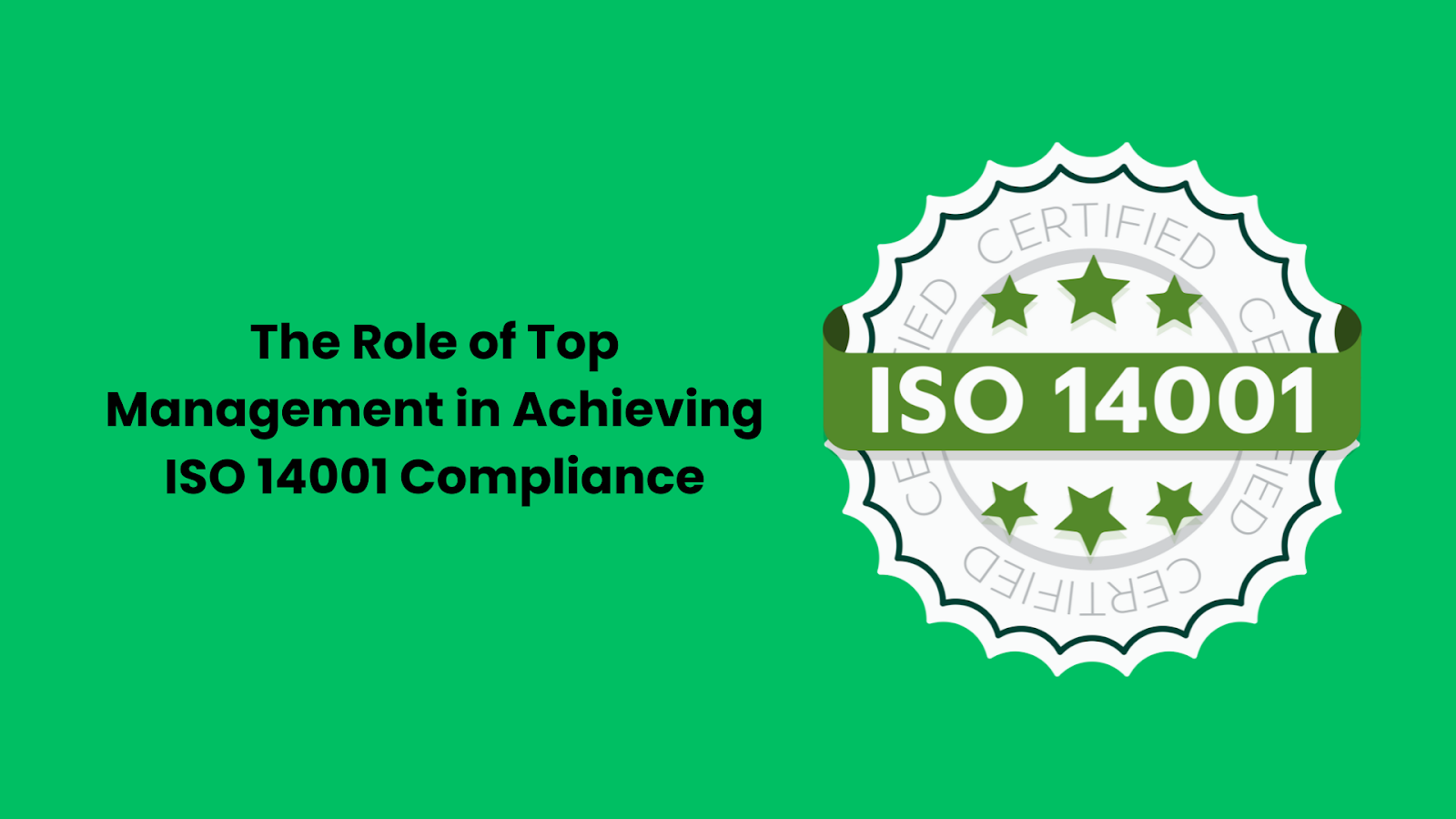Sustainability is a popular term used by organisations to promote their environment-friendly nature. However, merely stating their practices towards a net zero carbon footprint is insufficient. Regulatory bodies often require organisations to cater to certain compliances that align with sustainability. A prominent example is ISO 14001 Compliance.
In this blog, we discuss the benefits of ISO 14001 Training, the role of management in earning this certification and more.
Table of Contents
- What is ISO 14001?
- What is an Environmental Management System?
- How can an organisation get ISO 14001 certification?
- What is the role of top management in achieving ISO 14001 certification?
- What are the benefits of ISO 14001 certification?
- Conclusion
What is ISO 14001?
The International Organization for Standardization or ISO 14001 refers to the guidelines for implementing effective and sustainable practices. This includes the implementation of an effective Environmental Management System. The guidelines also include ways to boost the efficiency of the Environmental Management System. ISO 14001 is considered a gold standard among compliances on effective Environmental Management Systems.
What is an Environmental Management System?
An Environmental Management System or EMS integrates personnel training, policies, monitoring, and much more. It is also used to report information about environmental policies and practices to internal and external stakeholders. Any EMS follows a Plan-Do-Check-Act or PDCA cycle. This involves planning and developing an environmental policy and then implementing it. Further steps include checking the system for anomalies and shortcomings and acting on them. A fully functional and efficient EMS is the key component of ISO 14001.
How can an organisation get ISO 14001 certification?
Getting ISO 14001 certification is not easy as it involves extensive audits and documentation over a period of six months to two years. The bigger your organisation is, the more complex the documentation process will be.
Auditing also produces its fair share of pointers that must be adhered to before the certification. If your organisation has a centralised system for documentation, then that can help reduce the time it takes to get the audit done.
What is the role of top management in achieving ISO 14001 certification?
The top management of an organisation comprises decision-makers and policymakers. People in charge of such positions are responsible for adhering to the guidelines established in ISO 14001. The latest version comprises nine roles for the top management; here’s what these roles look like:
- The top management shall always be held accountable for efficiently deploying an EMS. Its operation, including delegating responsibilities to the correct people, is essential.
- The top management is supposed to integrate EMS requirements into the business processes for ease of deployment.
- They are also supposed to ensure that the environmental policies and objectives are in sync with the company’s strategic objectives and direction.
- The top management is also responsible for efficiently allocating resources required for environmental responsibilities.
- Proper communication about the importance of EMS and effective environmental management.
- Conducting regular reviews and ensuring the EMS achieves its intended objectives.
- The top management is also supposed to propose and implement continuous improvement.
- They’re supposed to direct people for their effective contribution towards the effectiveness of EMS.
- The top management is supposed to demonstrate leadership, for the position enforces such a responsibility.
What are the benefits of ISO 14001 certification?
There are a plethora of benefits that come with an ISO 14001 certification. Some notable ones can be listed as follows:
- It keeps your organisation on par with the trends that demand adherence to environmental awareness.
- An ISO 14001 certification gives your organisation a better chance of winning private and government tenders.
- The certification gives you an edge over your competition as you’ll comply more with the guidelines.
- It helps reduce operational waste to a great extent. Furthermore, it’ll help you identify the areas that need improvement.
- Reducing waste boosts profit margins as unnecessary expenditures are eliminated or minimised.
- An ISO 14001 certification also helps boost your team’s morale as everyone will pitch in ideas. When everyone has a say in a process, the sense of agency drives them to do better.
- Perhaps the most important benefit is that the certification promotes continuous improvement. Every process that is considered and implemented is checked for results. If positive, it is deployed uniformly across all crucial spheres.
Conclusion
The ISO 14001 Certification dictates the processes required for a better tomorrow, devoid of practices that pollute the resources you need. Decision-makers need to implement the necessary protocols required to establish an EMS. It is of paramount importance that the top management understands the need for ISO 14001 certification.











